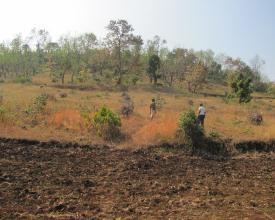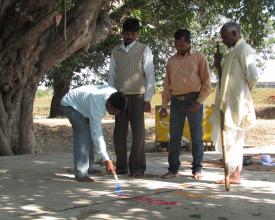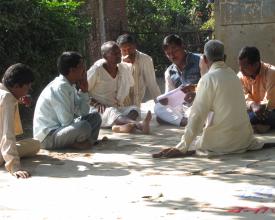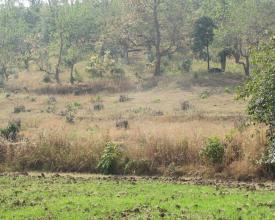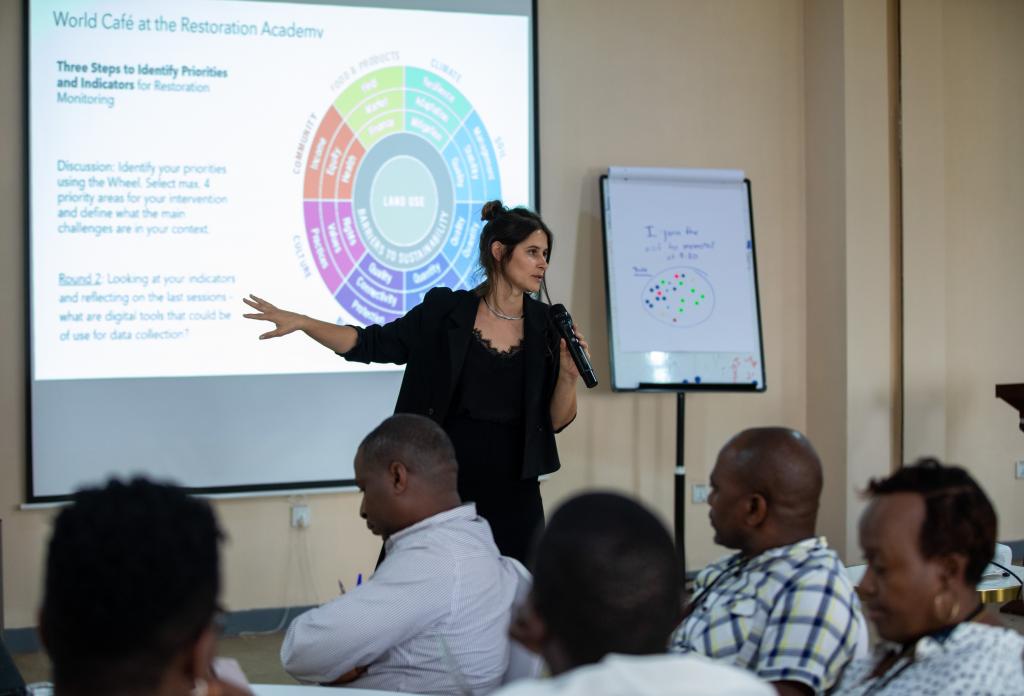
Resilient rural livelihoods through eco-restoration and sustainable natural resources management
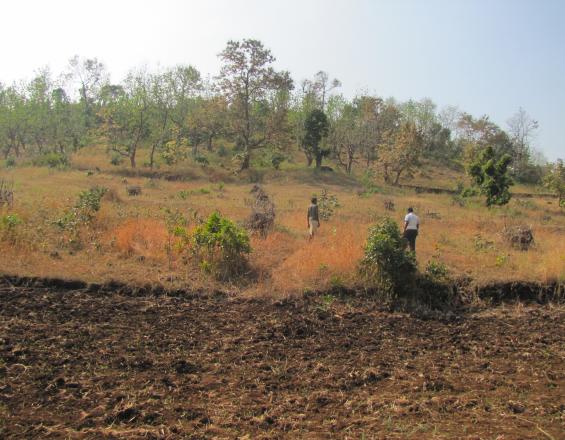
Forest degradation, loss of biodiversity, declining agricultural productivity and soil erosion, exacerbated through climate variability and change threaten natural resource dependent communities in Mandla district. The project pursues an integrated approach of eco-restoration, sustainable forest management and agriculture, combining ecosystem-based measures (forest restoration, agroforestry) with technical measures (e.g. stone bunds, seed replacement, improved farming techniques).
Contexte
Challenges addressed
Indigenous communities in Mandla district depend heavily on small-scale rain-fed farming and on different non-timber forest produce for their livelihoods. The forest provides fuel wood, fruits, fodder for livestock, housing material and medicine.
Recent changes in rainfall patterns and temperature have had heavy impacts on agriculture. The yields of maize and paddy for example have gone down. Certain traditional resilient millet varieties have vanished due to farmers switching to more commercial crops like paddy and maize. Forest degradation aggravates the impacts of erratic rainfall; more and more fertile soil is washed away because the protective tree and grass cover vanishes. One major reason for forest degradation and overuse of natural resources is weak village institutions. These institutions govern the behaviour of communities over common property resources and thus play an important role in the local management of natural resources.
Beneficiaries
Institution strengthening: 1,643 indigenous families of the Gond and Baigas tribes (5,775 individuals)
Sustainable forest and agriculture management: 553 indigenous families of the Gond and Baigas tribes (1,968 individuals)
Emplacement
Traiter
Summary of the process
An initial situation analysis and vulnerability assessment (Building Block 1) prepared the ground for the interventions at village level. On the organisational level, strengthening Village Institutions (Building Block 2) was identified as key to enabling villagers in actively managing their natural resources for climate change adaptation. In addition, a variety of measures for eco-restoration and sustainable natural resources management such as agroforestry or forest restoration (Building Block 3) was implemented.
Building Blocks
Situation analysis and vulnerability assessment
The analysis aimed at studying the vulnerability of tribal communities located in the upper catchments of Gaur river in Niwas block of Mandla district towards erratic rainfall. The assessment is also relevant for the entire Mahakuahsal region.
In order to understand exposure, sensitivity and adaptive capacity of the region, the team has taken a people-centric approach combining field work for the collection of household and village institution data with data available under public domain. The latter comprised finding and analyzing existing meteorological data, other data from government agencies and conducting interviews with higher authorities. The field methods applied include PRA, ecological baseline protocols, household economic analysis and farmer questionnaires.
The results were used to design and implement activities that specifically work on counteracting the impact of erratic rainfall, drought conditions, containing soil erosion and strengthening village institutions for building conservation ethic, in order to control the forest degradation and fragmentation. Building models to interlink farm and demonstrations on commons for reducing soil erosion.
Enabling factors
Guidance and support on carrying out local level vulnerability assessment including a a template for the VA to be filled out by the implementing agency FES was provided by CCA RAI.
Involvement of both men and women in identifying climate change challenges and vulnerability factors and involving them in data collection is crucial.
Lesson learned
The assessment showed that adaptation strategies need to be designed with a community-oriented approach so that the villages become more self-dependent.
Participatory exercises such as PRA (Participatory Rural Appraisal) are very effective in generating essential information on all aspects of a community's vulnerability to climate change.
Climate data are often not available at the local level and data from a higher spatial aggregation must be used for validation/ triangulation.
A clear distinction between sources of information is necessary to know where the line between community perception and scientific evidence can be drawn.
Local level vulnerability assessments can also provide the starting point for developing monitoring and evaluation (M&E) frameworks for local level adaptation projects. Accordingly, an M&E framework should contain indicators based on the components of climate change vulnerability.
Resources
Strengthening village institutions
Village level institutional mechanism is essential for the protection of indigenous community conserved areas. A key aspect of FES's interventions in the villages of Mandla was the constitution of the Natural Resource Management Committees or Prakratik Sansadhan Prabandhan Samitis (PSPS). The samitis, were elected by the Gram Sabhas (adult meetings) and had universal membership ensuring that every resident of the village, despite his/her social or economic standing had a say in the functioning of the Samiti. Advising the gram Sabha on natural resource management and spearheading the process of developing rules and regulations around commons is one of the duties of the committee along with planning for natural resources and land use.
The PSPS received training on decentralized governance, perspective building on commons and planning. Village institutions arrived at a set of rules on using natural resources. Primarily, these rules included boundary rules, protection rules for forests and usage rules to some extent. Basic focus has been on controlling lopping and logging of trees. At some places, they have also come up with rules regarding sharing of fish produced in village pond, etc. for forests and usage rules to some extent.
Enabling factors
The Panchayati Raj Act, Panchayat Extension to Scheduled Areas, Joint Forest Management and the National Biodiversity Act provide a legal framework. Gram Sabha (a meeting of all adults in the Panchayat area) also provide an enabling framework for village level conservation institutions.
The issues of conservation and resource governance were discussed with men and women separately, building an understanding of degradation of natural resources within the PSPS and then in the Gram Sabha.
Lesson learned
The strengthened village institutions actively manage and conserve over 500 hectares of forest in the project region by overseeing the sustainable use of natural resources. A comparison with a forest that is not managed by a community indicates that a community managed forest shows 60 per cent more regeneration, 37 per cent more plant density and a 40 per cent higher number of plant species.
Strengthening of village institutions leads to articulation of village’s priorities and ensures mainstreaming of resource management and conservation. Strong village institutions are able to plan for the landscape, addressing issues like forest fragmentation and treat entire forest fringes as one unit, irrespective of the pattern of ownership. An institution therefore is a better unit in order to improve adaptive capacities of the communities, as it can address the ‘issue’ for the entire community and not only for single families.
Agro-forestry and forest restoration
Eco-restoration through agro-forestry on forest fringes and slopes, and plantations on bunds was implemented as livelihood diversification option. Bund-plantations and agro-forestry enhance soil fertility, reduce forest fragmentation, increase soil moisture and decrease soil erosion. In addition, they ensure the provision of resources like wood and fruits, to add to the incomes of farmers in future. Tree based options are supposedly much more robust and long-lasting than crop based options for climate change adaptation, though their impacts can only be assessed in long term.
Care was taken in selecting the tree species as it was important to preserve the genetic pool of native tree species while avoiding the introduction of any alien species not conducive to the local environment. This also contributes to water conservation, as native tree species would not absorb that much water from the soil.
Enabling factors
Involving community members and local institutions in developing rules on how to use natural resources and tree products.
Efficient communication and knowledge sharing among stakeholders allowed to spread technical know-how to carry out interventions not only in the project area, but also in neighbouring villages.
All measures are built on locally available resources and the institutional mechanisms at village level will ensure sustainability of measures and impacts achieved.
Lesson learned
There is a high replication potential for forest-restoration in India. About 275 million of the country’s rural poor people depend on forests for at least a part of their subsistence. The implemented agro-forestry interventions on forest fringes will further support the stabilisation of the agricultural system and hence ensure that the beneficiaries have diversified livelihood sources.
Farmers are aware that trees do not require manure and fertiliser for growth and development. Selecting species based on the interest of the farmers supports better survival and growth of the trees.
Impacts
Village institutions actively manage and conserve over 500 hectares of forest in the project region by overseeing the sustainable use of natural resources. A comparison with a forest that is not managed by a community indicates that a community managed forest shows 60 per cent more regeneration, 37 per cent more plant density and a 40 per cent higher number of plant species.
In the upcoming years the implemented agro-forestry interventions on forest fringes will further support the stabilisation of the ecosystem and hence ensure that the beneficiaries have diversified livelihood sources
Stone exits and stone bunds have improved soil conservation: Within one year, a total of 37,319 cubic metres of soil was saved from being washed away. More than half of the beneficiaries have improved their yields and managed to shift to growing two instead of only one crop within one growing season. Their annual average income increased by up to 40 per cent as compared to farmers working without stone exits and bunds
Improved farming techniques resulted in a 19 per cent productivity increase of millet and maize, and a 30 per cent productivity increase of paddy. This led to an average income increase of up to 20 per cent and resulted in decreasing sensitivity to climate variability and change.
FES has recently scaled up the interventions in ProSoil project supported by GIZ.
Sustainable Development Goals
Story
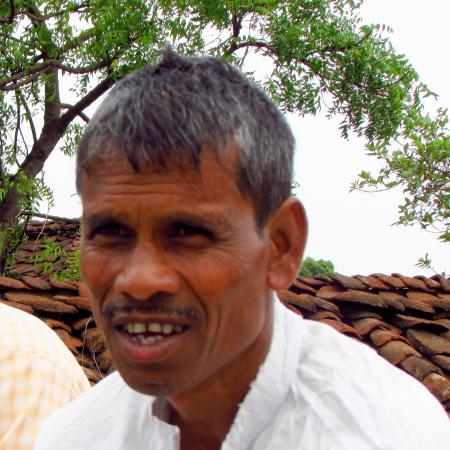
We started community-based forest conservation around our village one year ago. Until today, we have managed to protect around 200 hectares of forest. FES and GIZ helped us to understand the importance of having rules and regulations for managing forests and to come up with our own rules in order to use our natural resources in a better way than in the past. The rules are to control lopping and logging of trees, to set limits for harvesting non-timber forest produce and to regulate an equitable sharing of resources amongst villagers. We have also successfully established boundaries in three forest blocks. In one of the blocks resource use is completely prohibited now. Four volunteers from our village monitor the forest blocks daily. This way, we assist the state forest department in its forest protection efforts. Unlike in the past, today we feel like we have a real say when it comes to managing our forest and our resources. The rules that our committee set are strictly followed by most villagers.
Shital Singh Dhumketi, 48 years Farmer and president of the Natural Resource Management Committee in Payalibahur village, Madhya Pradesh
